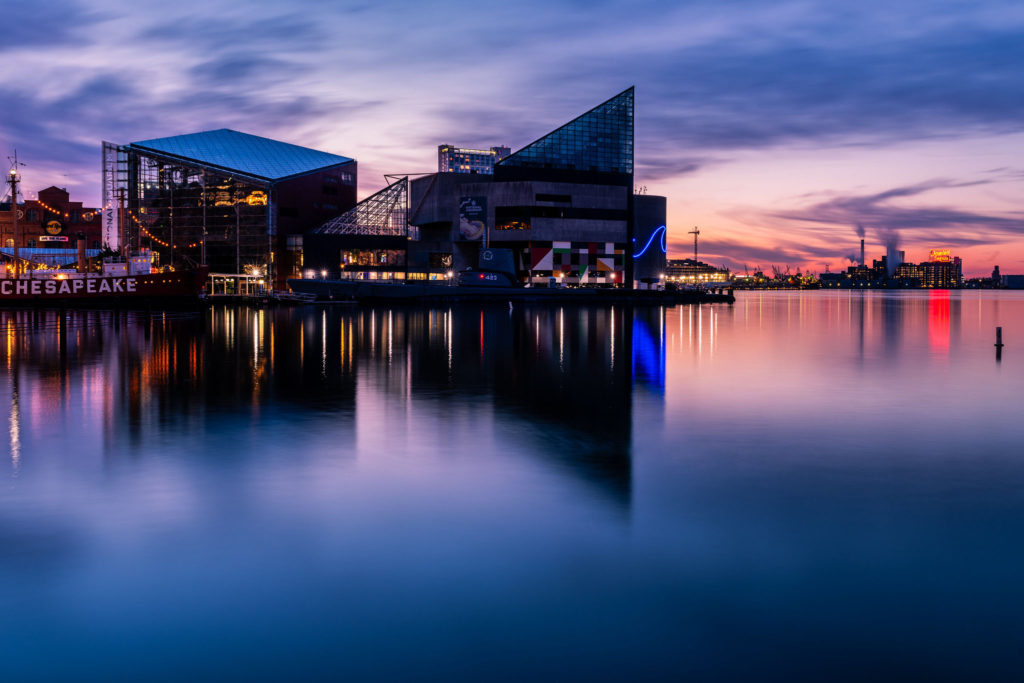Maryland Tourist Spots Attract the ‘Staycation’ Set

Originally published on Aug 3, 2009 in the Baltimore Business Journal
It started last year with high gas prices. It continued into 2009 with the recession.
The drop in out-of-town visitors caused Eastern Shore innkeepers Joanne and Jim Rich to rethink their bed-and-breakfast’s marketing strategy.
“We made a conscious decision to cultivate the ‘staycationers,’ ” Joanne Rich, co-owner of the Inn at Huntingfield Creek in Rock Hall, said of local tourists.
For the couple that meant partnering with other local establishments to offer perks to mid-week visitors, like free sailing trips with an area charter business. They also marketed the inn as child- and pet-friendly for families interested in a closer-to-home vacation, and touted the inn’s wedding, meeting, and other event capabilities.
Their efforts seem to have paid off. Although out-of-town visits are down, revenue at the Inn at Huntingfield Creek has remained flat thanks to an uptick in local business.
Creative marketing strategies are deployed throughout the state’s tourism industry to continue to lure summer tourists at a time when both the destinations and the consumers they want to attract have tighten their purse strings. These strategies — including re-tooling target markets, partnering with other local attractions on advertising campaigns, and promoting free events at tourist destinations — have helped buoy tourism to respectable levels this season.
Industry experts also credit “traveler’s resistance” and Maryland’s well-positioned location between Washington, D.C., and New York with keeping the tourism numbers from plummeting.
“Because we’re such a drive destination, Maryland has weathered the storm better than most states,” said Margot Amelia, executive director of the Maryland Office of Tourism. “My compatriots in Florida have really been having some problems.”
Towson resident Tess Hoffman and her husband don’t like to leave their cats alone for too long, so they tend to take short vacations. But this year their decision to go away for just two nights and hang around the house for the remainder of their vacation week had as much to do with watching their budget as it did their pets.
Savvy marketing by a Rehoboth Beach, Del., hotel trumpeting a reduced-rate, mid-week stay was enough to get the couple out of Greater Baltimore for a short sojourn.
“We bought a house last November, so we’re trying to watch our finances,” said Hoffman, an education curriculum specialist.
Travel expert Cathy Keefe said she believes traveler’s resistance — where consumers resist giving up leisure travel in spite of a down economy — can prove beneficial for local destinations.
“People will travel differently, with modifications,” said Keefe, spokeswoman for the U.S. Travel Association. That means more day trips or long weekend getaways — hallmarks of the “staycationer” travel itinerary — in lieu of week-long vacations.
From July 2008 through this May, the state collected $720.8 million in revenue from tourism-related tax receipts, a 9.9 percent increase over the same period last year, Amelia said.
The Maryland Office of Tourism conducted an analysis last year of where Maryland’s tourists come from. In 2007, 50 percent of visitors came from Washington, D.C. (including Northern Virginia and surrounding suburbs), Baltimore and Philadelphia. So the office shifted its marketing efforts to focus on those three areas, buying radio and TV ads there.
“We played right into this staycation mode,” Amelia said.
In May, the Maryland Office of Tourism launched the “Monthly Spotlight,” a new marketing campaign that highlights a single theme of Maryland travel each month — this despite an estimated $2.6 million slash in the office’s marketing budget in the middle of its fiscal year.
At Maryland’s state parks, reservations are up 36 percent. Assateague Island, a coveted campground for Marylanders, has a waiting list. The park system doesn’t have an advertising budget. But with rates that start at $20 per night, it doesn’t need one to attract visitors in this economy.
The Baltimore Area Convention and Visitors Center (BACVA) also has altered its target marketing reach. Its new advertising campaign, “Expect the Unexpected” — launched in the spring and focusing on Baltimore’s arts, culture, history and family attractions — casts a wider net than before, extending into untapped markets, from Southern New England to Ohio and Virginia to the Carolinas.
Though they’ve extended their reach, BACVA says it’s maintaining a strong local push.
“We’re covering two different markets with a similar message,” said Sam Rogers, BACVA’s executive vice president and chief marketing officer. “It’s selling both the daytrip as well as the opportunity to stay overnight.”
Budget cuts haven’t impacted BACVA’s $475,000 advertising outlay, which remains on par with last year, Rogers said.
A family-oriented, summer-long promotion called “Waterfront Invasion” and jointly sponsored by BACVA, the Maryland Science Center, the National Aquarium in Baltimore and the Waterfront Partnership of Baltimore is enabling the partners to get “more bang for our collective bucks,” Rogers said.
The aquarium’s marketing reach has typically stayed close to home, but the bundled marketing campaign is new for the popular tourist attraction, said spokeswoman Denise Aranoff-Brown.
Attendance at the aquarium is up 2 percent to 3 percent over last year. The aquarium sees more than 5,000 visitors on a typical July weekday. Attendance jumps to about 9,000 on a Saturday or Sunday, and a toddler is as likely to enjoy the exhibits as a teenager or adult.
Its already unique appeal as a tourist destination only elevates the aquarium as a “staycation” diversion.
“Because people have less discretionary income, they’re choosing an experience everyone in the family can have together,” said Aranoff-Brown.